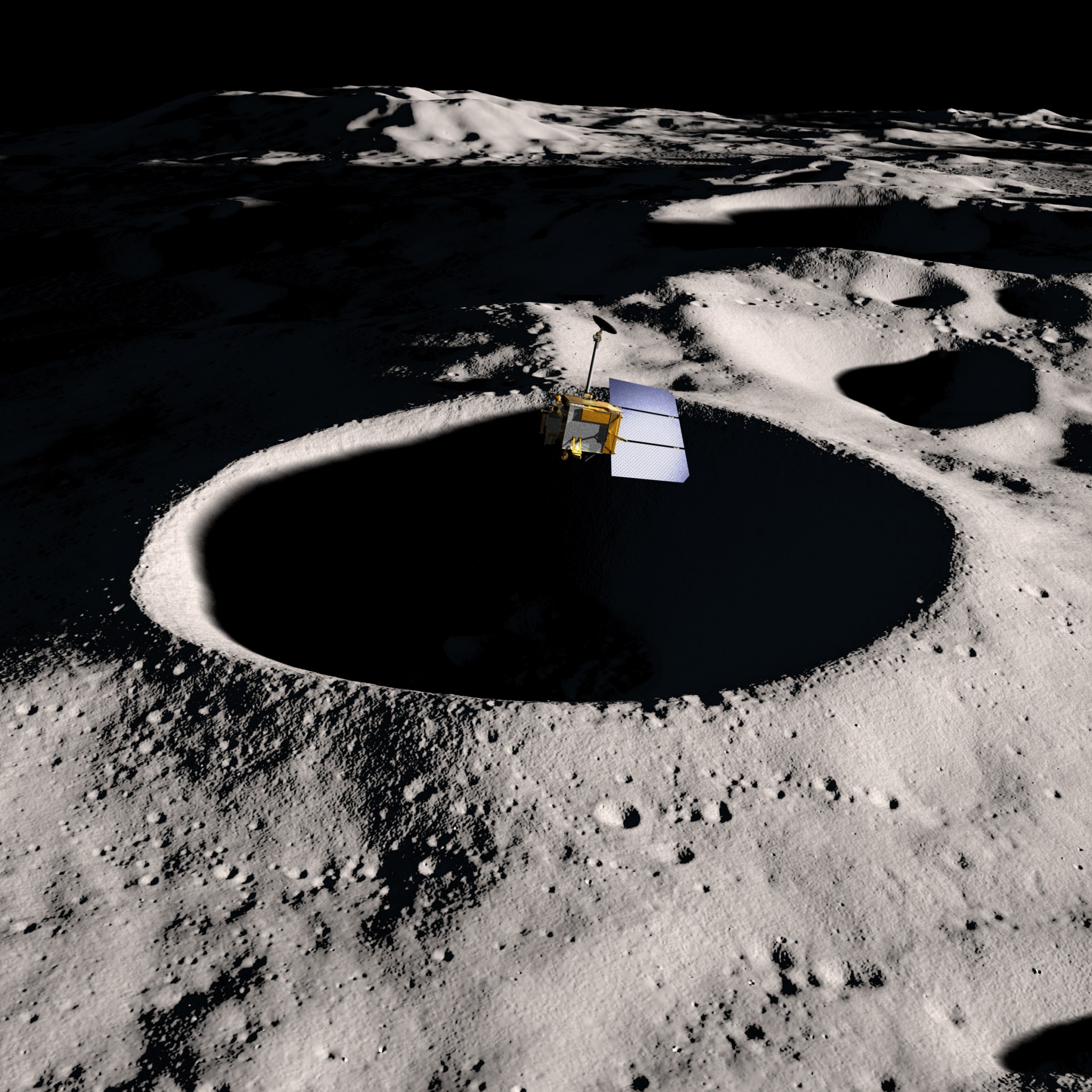
NASA’s Lunar Reconnaissance Orbiter (LRO) has completed a maneuver that lowered the spacecraft’s orbit to within 20 kilometers (12 miles) above areas near the lunar South Pole, the closest the spacecraft has ever been to the lunar surface.
On Monday, May 4, 2015 flight controllers at NASA’s Goddard Space Flight Center in Greenbelt, Maryland performed two station keeping burns to change LRO’s orbit. The new orbit allows LRO to pass within 20 km (12 miles) of the South Pole and 165 km (103 miles) over the North Pole.
“We’re taking LRO closer to the moon than we’ve ever done before, but the maneuver is similar to all other station keeping maneuvers, so the mission operations team knows exactly what to do,” said Steve Odendahl, LRO mission manager from NASA Goddard.
To optimize science return, team members made the decision to change the orbit after determining that the new orbit configuration poses no danger to the spacecraft. LRO can operate for many years at this orbit.
The new orbit enables exciting new science and will see improved measurements near the South Pole. Two of the instruments benefit significantly from the orbit change. The return signal from the Lunar Orbiter Laser Altimeter (LOLA) laser shots will become stronger, producing a better signal. LOLA will obtain better measurements of specific regions near the South Pole that have unique illumination conditions. Diviner will be able to see smaller lunar features through the collection of higher resolution data.
“The lunar poles are still places of mystery where the inside of some craters never see direct sunlight and the coldest temperatures in the solar system have been recorded,” said John Keller, LRO project scientist at NASA Goddard. “By lowering the orbit over the South Pole, we are essentially magnifying the sensitivity of the LRO instruments which will help us understand the mechanisms by which water or other volatiles might be trapped there.”
Launched on June 18, 2009, LRO has collected a treasure trove of data with its seven powerful instruments, making an invaluable contribution to our knowledge about the moon. LRO is managed by NASA’s Goddard Space Flight Center in Greenbelt, Maryland, for the Science Mission Directorate at NASA Headquarters in Washington.
For more information on LRO visit: https://www.nasa.gov/lro
Nancy Neal Jones
NASA’s Goddard Space Flight Center



























